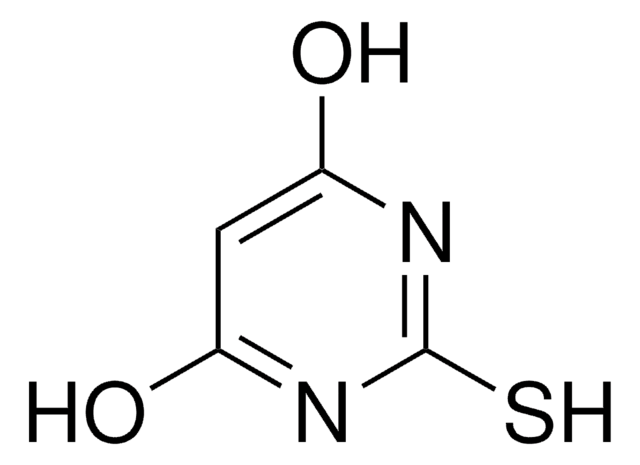Kluczowe dokumenty
31267
Trichloroacetic acid
PESTANAL®, analytical standard
Synonim(y):
TCA
About This Item
Polecane produkty
klasa czystości
analytical standard
gęstość pary
<1 (vs air)
ciśnienie pary
1 mmHg ( 51 °C)
linia produktu
PESTANAL®
okres trwałości
limited shelf life, expiry date on the label
metody
HPLC: suitable
gas chromatography (GC): suitable
współczynnik refrakcji
n20/D 1.62 (lit.)
bp
196 °C (lit.)
mp
54-58 °C (lit.)
rozpuszczalność
soluble 81.7 g/L at 20 °C (completely)
gęstość
1.62 g/mL at 25 °C (lit.)
Zastosowanie
agriculture
cleaning products
cosmetics
environmental
food and beverages
personal care
Format
neat
ciąg SMILES
OC(=O)C(Cl)(Cl)Cl
InChI
1S/C2HCl3O2/c3-2(4,5)1(6)7/h(H,6,7)
Klucz InChI
YNJBWRMUSHSURL-UHFFFAOYSA-N
Szukasz podobnych produktów? Odwiedź Przewodnik dotyczący porównywania produktów
Zastosowanie
Informacje prawne
Hasło ostrzegawcze
Danger
Zwroty wskazujące rodzaj zagrożenia
Zwroty wskazujące środki ostrożności
Klasyfikacja zagrożeń
Aquatic Acute 1 - Aquatic Chronic 1 - Eye Dam. 1 - Skin Corr. 1A
Kod klasy składowania
8B - Non-combustible corrosive hazardous materials
Klasa zagrożenia wodnego (WGK)
WGK 2
Temperatura zapłonu (°F)
>235.4 °F - closed cup
Temperatura zapłonu (°C)
> 113 °C - closed cup
Środki ochrony indywidualnej
Eyeshields, Faceshields, Gloves, type P3 (EN 143) respirator cartridges
Wybierz jedną z najnowszych wersji:
Certyfikaty analizy (CoA)
Przepraszamy, ale COA dla tego produktu nie jest aktualnie dostępny online.
Proszę o kontakt, jeśli potrzebna jest pomoc Obsługa Klienta
Masz już ten produkt?
Dokumenty związane z niedawno zakupionymi produktami zostały zamieszczone w Bibliotece dokumentów.
Nasz zespół naukowców ma doświadczenie we wszystkich obszarach badań, w tym w naukach przyrodniczych, materiałoznawstwie, syntezie chemicznej, chromatografii, analityce i wielu innych dziedzinach.
Skontaktuj się z zespołem ds. pomocy technicznej







